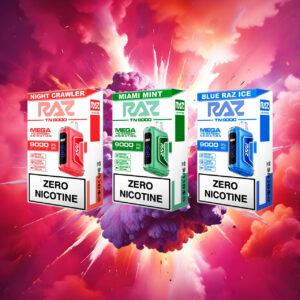How Heatproof Are Silicone Spatulas? Will They Melt?
Silicone spatulas have become a kitchen staple for many home cooks and professionals alike. Known for their flexibility, durability, and resistance to staining, these handy tools are often favored over traditional wooden or metal spatulas. But an important question still lingers for many: How heatproof are silicone spatulas? And more specifically, does silicone spatula melt?
Let’s dive into the facts to uncover just how reliable silicone spatulas are under heat and whether you should worry about them melting in your pan.
What Makes Silicone Heatproof?
Silicone is a synthetic polymer made from silicon, oxygen, carbon, and hydrogen. Its molecular structure is what gives it exceptional temperature resistance. High-quality silicone can generally withstand heat up to 450°F (232°C) and sometimes even up to 600°F (315°C) depending on the grade and manufacturer.
This heat resistance is why silicone tools, especially spatulas, are commonly used when cooking on stovetops or baking in ovens. They’re designed to resist deformation and maintain their integrity at high temperatures where other materials might fail.
Does Silicone Spatula Melt on High Heat?
The concern “does silicone spatula melt” is a common one, especially for those new to silicone kitchen tools. The short answer is: not under normal cooking conditions.
When used correctly, silicone spatulas do not melt. They are engineered to handle most kitchen temperatures with ease. However, it’s essential to ensure that the spatula you’re using is made of 100% food-grade silicone. Some cheaper versions may contain plastic fillers that lower the heat resistance and may indeed melt if exposed to high heat.
It’s also important to remember that even though silicone is heat-resistant, it’s not indestructible. Direct contact with open flames, hot burners, or being left in a pan for too long can eventually damage the spatula.
How to Identify Heat-Resistant Silicone Spatulas
Not all silicone spatulas are created equal. If you’re wondering whether your current spatula can stand up to high temperatures, here are a few things to look for:
- Labeling: Check if it says “100% food-grade silicone” or specifies a heat rating (e.g., up to 450°F).
- No Plastic Fillers: Quality spatulas are solid silicone or reinforced with stainless steel, not plastic.
- Brand Reputation: Trusted kitchenware brands usually offer better heat resistance and durability.
When buying, always read the product description or label carefully to ensure you’re getting a high-heat-resistant spatula.
Real Kitchen Scenarios: When Melting Might Happen
Although rare, there are cases where someone may report that their silicone spatula melted. This often happens when:
- The spatula contains plastic or rubber additives.
- It was left resting on a hot pan, skillet, or burner for an extended time.
- It was placed directly into an open flame or inside a grill.
In these instances, the spatula isn’t failing because silicone inherently melts easily—but rather because it’s being misused or is made from poor-quality materials.
If you’ve ever wondered, does silicone spatula melt under direct heat, the answer is yes—it can if misused or if it’s not made of pure silicone.
Advantages of Using Silicone Spatulas in High-Heat Cooking
Despite the concern around melting, silicone spatulas offer several advantages in heat-heavy cooking situations:
- Non-reactive: Silicone doesn’t react with acidic or alkaline foods.
- Safe for non-stick cookware: Won’t scratch or damage surfaces.
- Flexible yet sturdy: Perfect for scraping bowls or flipping delicate foods.
- Dishwasher safe: Easy to clean and doesn’t absorb odors or stains.
When used properly, silicone spatulas are incredibly reliable, even when cooking over medium to high heat.
How to Take Care of Your Silicone Spatula
To ensure your silicone spatula lasts and remains safe to use:
- Avoid direct flame: Never rest it on a burner or open flame.
- Don’t use it in broilers or grills where temperatures exceed 500°F.
- Inspect for damage: If it starts to warp, discolor, or smell, it may be time to replace it.
- Clean properly: Wash after every use and store in a cool, dry place.
Taking these precautions will significantly extend the life of your spatula and eliminate any fear of it melting.
When You Should Replace Your Silicone Spatula
Even the most durable kitchen tools need replacing eventually. If you notice signs such as:
- Cracks or splits in the silicone
- Foul odors that don’t go away after washing
- Melted or warped edges
Then it’s time to get a new spatula. Continued use of a compromised spatula could affect food safety and cooking performance.
So, in cases like these, if you’re still asking does silicone spatula melt, the answer might be “yes”—but only because it’s been overused or damaged.
Final Verdict: Will Silicone Spatulas Melt?
In summary, silicone spatulas are highly heat-resistant and generally safe for all types of cooking and baking. The myth that they melt easily is mostly due to poor-quality imitations or improper use.
To wrap it all up:
- High-quality silicone spatulas can withstand 450°F or more.
- Pure silicone will not melt under normal kitchen use.
- The question does silicone spatula melt only applies in extreme or careless scenarios.
So, rest assured—if you’re using a good-quality silicone spatula the right way, it will not melt during everyday cooking tasks.
Read also this article














Post Comment